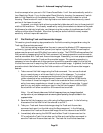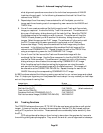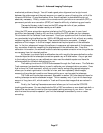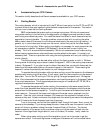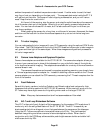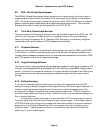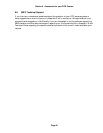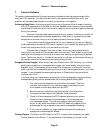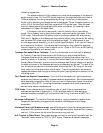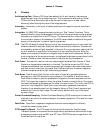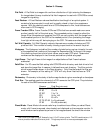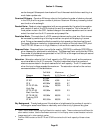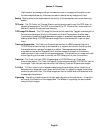Section 7 - Common Problems
Page 43
7. Common Problems
This section discusses some of the more common problems others have encountered while
using our CCD cameras. You should check here if you experience difficulties, and if your
problem still persists please contact us to see if we can work it out together.
Achieving Good Focus - Achieving a good focus is one of the most difficult areas in working
with CCD cameras due to the lack of real time feedback when focusing. Focus can take
a good deal of time, and as with all forms of imaging, focus is critical to getting the most
out of your camera.
Once you have achieved a good focus with your system, it can be very useful for
future observing sessions to scribe an eyepiece or mark down or log positions of each
component so the next time you will at least be close to focus at the start.
If you know where the focal plane lies for your telescope, you can use Table 3.1
to calculate exactly where the CCD is with respect to your system. By placing the CCD
close to the focal plane initially, you can save a lot of time.
The best kind of object to focus on is a star. As you converge towards focus,
more light from the star will be concentrated onto one pixel. Thus, watching your peak
reading while focusing and focusing for a maximum reading is a good way to get best
focus. This is how we do it. It helps to have a dial or indicator on the focus knob so you
can rapidly return to the best point after going through focus.
Elongated Guided Images - When using Track and Accumulate or Self Guiding, if you notice
guiding errors resulting in elongated star images, you are probably using too long a
snapshot time. If the snapshot time is longer than the amount of time your drive can
track unguided with acceptable guiding errors, you will see elongated stars in your final
images. If your snapshot times are getting down to 30 seconds or less you should
improve your drive.
If you are using your camera as an autoguider for film photography and are noticing
unacceptable guiding errors, please check the following before calling SBIG:
1. Can you move the telescope using the Move command? This is an
indicator as to whether or not you are properly connected to your
drive system via the relay cable from the CPU.
2. Be sure that your calibration time gives at least 10 to 50 pixels of
movement for each step of the Calibrate Track command.
3. Check for flexure between the CCD camera head and your system.
Check for flexure between the guide scope or off-axis guider and
your telescope system. This is a very common source of guiding
errors. A very small movement of the CCD head with respect to the
guide scope during an exposure can cause unacceptable streaking.
4. If your mount is stable, try longer exposure times while tracking to
average out the atmospheric effects.
Finding Objects - The size of the CCD used in the ST-7 (roughly 8mm diagonal) can make
finding objects a little difficult. If you experience this problem you might try the



